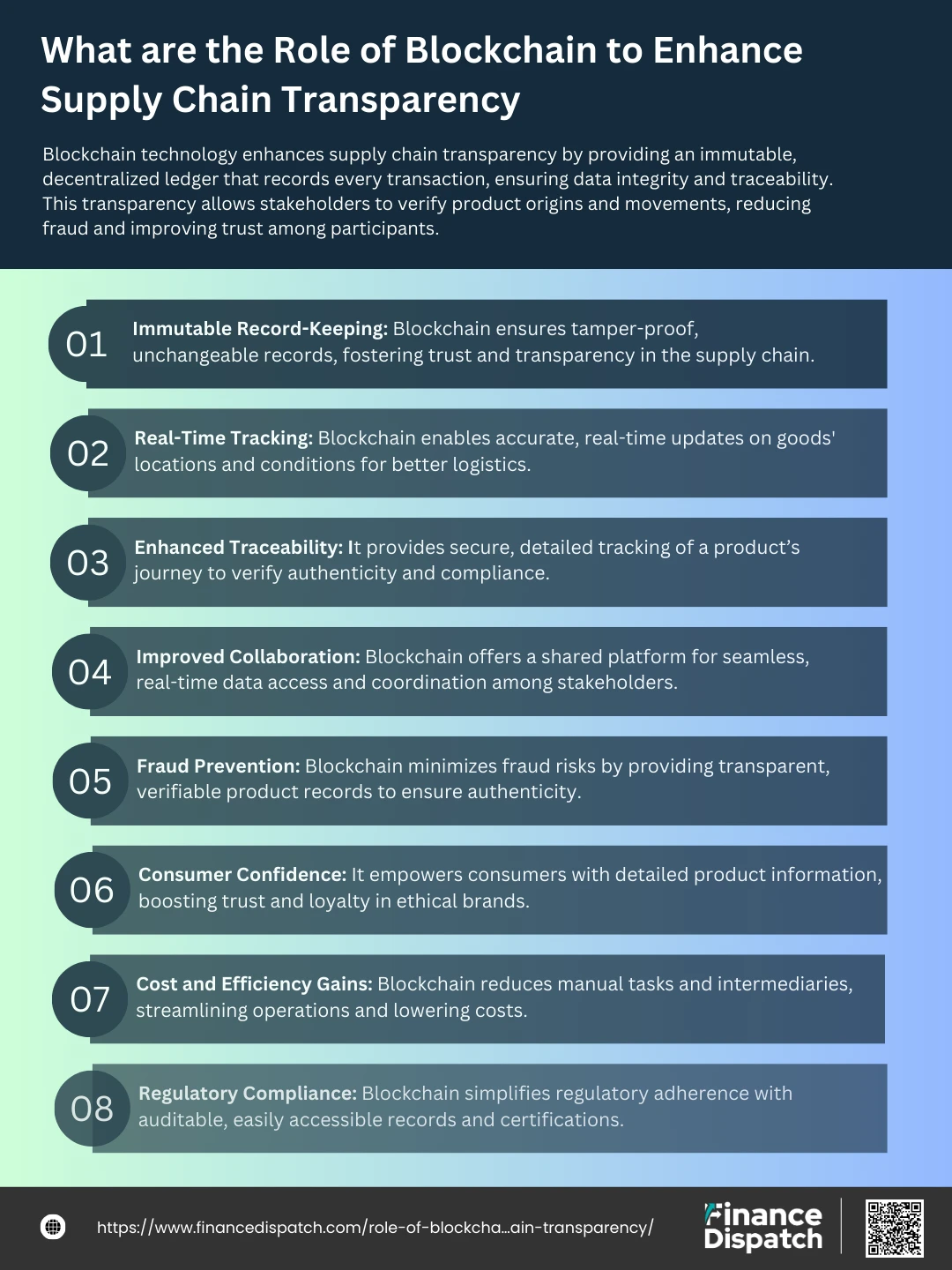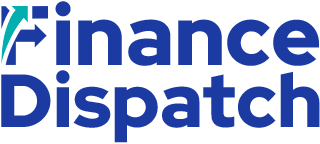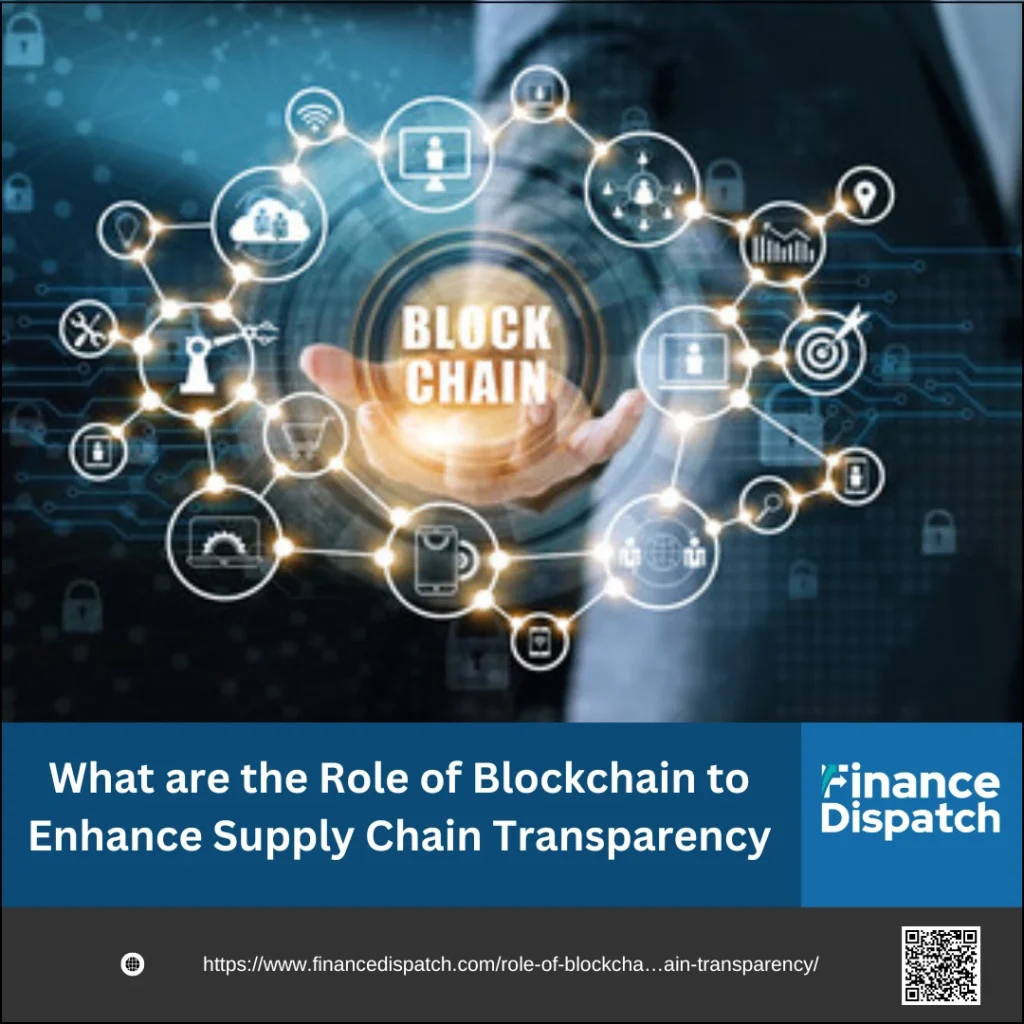Blockchain technology is a decentralized digital ledger that records transactions across multiple nodes, ensuring that every entry is transparent, immutable, and secure. At its core, blockchain operates through a series of interconnected “blocks,” each containing a record of transactions. These blocks are linked chronologically, forming an unalterable chain of data. Unlike traditional systems that rely on central authorities, blockchain enables all participants within the network to access and verify the same data independently. This decentralized structure reduces the risk of tampering, enhances data integrity, and fosters trust among parties. In the context of supply chains, blockchain’s ability to provide a single, reliable source of truth ensures that stakeholders can trace a product’s journey from origin to end consumer with unparalleled accuracy and confidence. By leveraging this technology, organizations can not only streamline operations but also address critical concerns like fraud, counterfeit goods, and ethical sourcing.
The Importance of Supply Chain Transparency
Supply chain transparency is crucial in today’s global market, fostering trust, improving efficiency, and ensuring compliance with ethical, environmental, and regulatory standards. By providing visibility into the origins and movement of products, transparency helps businesses build consumer confidence, mitigate risks, and enhance sustainability efforts. It enables companies to prevent inefficiencies, fraud, and counterfeiting while ensuring operational excellence and adherence to legal requirements. Moreover, transparency supports collaboration among stakeholders, allowing for smoother operations, better risk management, and shared accountability. Technologies like blockchain and IoT play a pivotal role in achieving these goals, securing supply chain integrity and fostering long-term competitiveness.

Role of Blockchain to Enhance Supply Chain Transparency
Blockchain technology plays a transformative role in enhancing supply chain transparency by providing an immutable, decentralized, and secure way to track and record every transaction and event in the supply chain. This improves accountability, reduces inefficiencies, and builds trust among stakeholders. Here’s how blockchain enhances supply chain transparency:
1. Immutable Record-Keeping
Blockchain technology ensures that every transaction and update in the supply chain is recorded in an immutable, tamper-proof ledger. Once data is entered, it cannot be altered or deleted, which guarantees the integrity of the records. This feature builds trust among all stakeholders by ensuring that no single party can manipulate information, creating a reliable foundation for transparency and accountability in the supply chain.
2. Real-Time Tracking
Blockchain enables real-time tracking of goods as they move through various stages of the supply chain. By integrating IoT devices and blockchain, companies can provide accurate, timestamped updates on the location, condition, and status of products. This real-time visibility helps businesses respond to delays, optimize routes, and improve inventory management, creating a more efficient and transparent logistics process.
3. Enhanced Traceability
Traceability is critical for verifying the origin and journey of products, especially in industries like food, pharmaceuticals, and luxury goods. Blockchain ensures that every step, from raw material sourcing to final delivery, is securely recorded. This allows stakeholders to verify ethical sourcing, adherence to safety standards, and authenticity, reducing the risk of counterfeit products and ensuring compliance with regulatory requirements.
4. Improved Collaboration
Blockchain provides a shared, decentralized platform where all participants in the supply chain—manufacturers, suppliers, distributors, and retailers—can access the same data in real time. This shared source of truth eliminates silos and fosters collaboration by reducing disputes, enhancing communication, and improving overall coordination. It creates a more seamless and unified approach to managing the supply chain.
5. Fraud Prevention
Counterfeiting, theft, and fraudulent activities are major challenges in supply chains. Blockchain combats these issues by storing detailed, verifiable records of every product, including certificates of origin, quality assurance data, and other critical information. The transparency of blockchain ensures that all parties can independently verify product authenticity, significantly reducing the risk of fraud and building trust in the system.
6. Consumer Confidence
Blockchain technology empowers consumers by giving them access to detailed product information, including its origin, journey, and compliance with ethical standards. This transparency allows consumers to make informed decisions and fosters trust in brands that prioritize integrity and sustainability. As a result, companies using blockchain to enhance transparency can differentiate themselves in the market and build lasting customer loyalty.
7. Cost and Efficiency Gains
By reducing reliance on manual processes, paperwork, and intermediaries, blockchain streamlines supply chain operations, saving time and costs. Smart contracts—self-executing agreements stored on the blockchain—automate and enforce transactions, reducing errors and delays. This enhanced efficiency not only lowers operational costs but also improves the overall flow of goods and information across the supply chain.
8. Regulatory Compliance
Compliance with regulations is often a complex and time-consuming process, but blockchain simplifies it by providing a clear and auditable trail of transactions and product details. Companies can store certifications, audit records, and compliance documentation on the blockchain, ensuring easy access and verification by regulatory bodies. This reduces the risk of penalties and enhances trust with regulators and customers alike.
Blockchain Solutions for Supply Chain
Blockchain technology offers transformative solutions for supply chain management by addressing inefficiencies, fraud, and lack of visibility. Through a decentralized and tamper-proof ledger, it ensures transparent and secure recording of every transaction and movement of goods. This innovative approach optimizes operations, enhances traceability, and fosters trust among stakeholders, revolutionizing supply chain processes. Key benefits of blockchain include enhanced product traceability, where an immutable record tracks a product’s journey from raw materials to delivery, ensuring authenticity and safety. Smart contracts automate processes, streamlining operations by executing terms like payments upon delivery.
Real-time inventory management integrates IoT with blockchain for proactive stock monitoring and storage optimization. Additionally, blockchain combats counterfeits by assigning unique digital identifiers to products, ensuring authenticity. It also simplifies compliance through tamper-proof document storage, fosters supplier collaboration via shared ledgers, supports sustainability by verifying ethical sourcing, and enhances logistics with real-time shipment tracking. This robust technology is reshaping supply chains to be more efficient, transparent, and secure.
Real-World Applications of Blockchain in Supply Chains
Blockchain technology has already made a significant impact on supply chains across various industries by enhancing transparency, traceability, and efficiency. From ensuring food safety to verifying the authenticity of luxury goods, blockchain is transforming how businesses operate and meet consumer expectations. Below is a table highlighting real-world applications of blockchain technology in supply chains across different sectors.
| Industry | Company/Initiative | Application | Impact |
| Food and Agriculture | Walmart & IBM Food Trust | Tracks the origin and handling of food products from farm to table. | Improves food safety by identifying contamination sources within seconds. |
| Pharmaceuticals | MediLedger | Tracks the movement of prescription drugs across the supply chain. | Prevents counterfeit drugs, ensures authenticity, and simplifies compliance. |
| Luxury Goods | De Beers & Tracr | Tracks the provenance of diamonds to ensure they are conflict-free and ethically sourced. | Enhances consumer confidence and combats the trade of unethical or counterfeit diamonds. |
| Retail | Carrefour | Uses blockchain to trace the origin and journey of fresh produce and meat. | Provides consumers with product transparency, increasing trust and brand loyalty. |
| Electronics | BMW | Tracks the sourcing of cobalt used in electric vehicle batteries to ensure ethical sourcing practices. | Verifies responsible mining and promotes sustainability in supply chains. |
| Healthcare | Pfizer | Uses blockchain to monitor the storage and distribution of vaccines and medical supplies. | Ensures proper handling and authenticity, reducing wastage and counterfeit risks. |
| Logistics | FedEx | Implements blockchain for real-time tracking and monitoring of shipments. | Increases efficiency, reduces disputes, and improves customer experience. |
| Aerospace | Boeing | Tracks the sourcing and manufacturing of aircraft components to ensure compliance and safety. | Enhances traceability and minimizes risks of counterfeit parts in critical operations. |
Challenges and Limitations
While blockchain technology holds immense promise for transforming supply chains, it is not without its challenges and limitations. Implementing blockchain involves navigating technical, financial, and regulatory hurdles, as well as addressing concerns about scalability and interoperability. Understanding these obstacles is crucial for businesses to develop strategies that maximize blockchain’s potential while mitigating risks.
1. Scalability Issues
Blockchain networks, especially public ones, often face limitations in handling a high volume of transactions simultaneously. This can result in slower processing times and higher costs, particularly during peak usage periods. In global supply chains with thousands of transactions occurring daily, these bottlenecks can hinder efficiency and delay operations. Private or permissioned blockchains may alleviate some of these issues, but they sacrifice decentralization to improve speed and scalability.
2. High Implementation Costs
Setting up blockchain infrastructure requires significant investment in hardware, software, and skilled personnel. The cost of integrating blockchain with existing systems, along with ongoing maintenance and upgrades, can be daunting, particularly for SMEs. Additionally, businesses must invest in training employees and stakeholders to understand and operate the new technology effectively, further increasing the financial burden.
3. Lack of Interoperability Standards
Different blockchain platforms often operate independently, with their own protocols and data formats. This lack of standardization makes it challenging to integrate multiple blockchains within a single supply chain ecosystem. For example, a logistics provider using one blockchain system may face compatibility issues when working with suppliers or retailers using different systems, reducing the overall efficiency of the network.
4. Energy Consumption
Blockchain networks using proof-of-work (PoW) consensus mechanisms consume vast amounts of energy, as nodes compete to solve complex cryptographic puzzles. This energy-intensive process raises sustainability concerns, especially for companies striving to meet environmental, social, and governance (ESG) goals. Alternative consensus mechanisms like proof-of-stake (PoS) are more energy-efficient but may not yet be widely adopted in supply chain applications.
5. Data Privacy Concerns
Blockchain’s transparency, while beneficial for ensuring accountability, can expose sensitive business information to other participants in the supply chain. This may include pricing, sourcing details, or proprietary processes. Striking a balance between transparency and confidentiality is crucial, and businesses often need to implement additional measures like private blockchains or zero-knowledge proofs to protect sensitive data.
6. Regulatory and Legal Uncertainty
Blockchain adoption is hindered by an unclear and fragmented regulatory landscape. Different countries and regions have varying rules about data protection, cryptography, and blockchain usage, creating legal complexities for global supply chains. Businesses may hesitate to adopt blockchain without clear guidance on compliance and liability issues, fearing potential disputes or penalties.
7. Stakeholder Resistance
Implementing blockchain requires the collaboration of all stakeholders in the supply chain, including suppliers, manufacturers, distributors, and retailers. Resistance to change, a lack of understanding, and differing interests can slow down adoption. For example, smaller suppliers might resist blockchain adoption due to costs or complexity, while larger entities may hesitate due to potential disruptions to existing workflows.
8. Complexity of Integration
Integrating blockchain into legacy systems is a technically complex process that often requires reengineering existing infrastructure. Ensuring that blockchain solutions work seamlessly with traditional supply chain management software, IoT devices, and enterprise resource planning (ERP) systems can be challenging and resource-intensive. Companies must also address data migration and interoperability challenges during the integration process.
9. Cybersecurity Risks
While blockchain is inherently secure, vulnerabilities exist in connected systems, such as IoT devices and smart contracts. Cyberattacks exploiting these weaknesses can compromise the integrity of the supply chain. For instance, poorly written smart contracts may be exploited to manipulate transactions or steal sensitive data. Businesses must adopt robust security protocols and conduct regular audits to mitigate these risks.
10. Dependence on Network Effects
Blockchain’s effectiveness in supply chains depends heavily on widespread adoption among all participants. Without full buy-in, critical gaps in transparency and traceability may persist. For example, if a key supplier or logistics provider does not adopt blockchain, the flow of reliable data can be disrupted, diminishing the overall benefits of the technology. Achieving network-wide adoption often requires significant effort in education, incentives, and standardization.
In Conclusion
Blockchain technology is reshaping supply chain management by addressing long-standing challenges of transparency, efficiency, and trust. By enabling real-time traceability, secure data sharing, and ethical sourcing verification, blockchain offers solutions that meet the growing demands of businesses, regulators, and consumers alike. Despite challenges like scalability, interoperability, and high implementation costs, advancements in technology and collaboration across industries are paving the way for wider adoption. As blockchain continues to integrate with emerging technologies and global standards evolve, it holds the potential to revolutionize supply chains, making them more resilient, transparent, and sustainable. Embracing blockchain is no longer just an option—it is becoming a necessity for organizations seeking to remain competitive in the rapidly changing landscape of global commerce.



